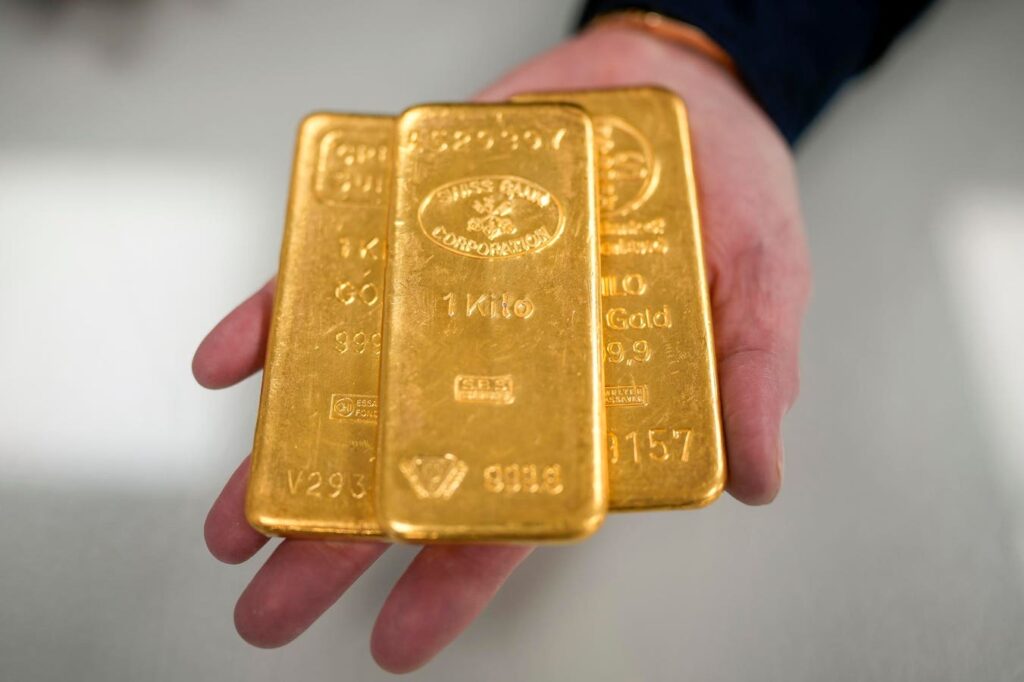In the latest report from the World Gold Council (WGC), global gold demand during the third quarter soared to unprecedented levels, hitting an all-time high for this period. Total consumption reached 1,313 tonnes, exhibiting a 5% increase from the previous year. This robust demand correlates directly with the surge in gold prices, which achieved several new record highs in the same timeframe. The interaction between soaring demand and rising prices resulted in gold demand’s value increasing by an impressive 35%, surpassing $100 billion for the first time in history. The average price of gold during this quarter settled at $2,474 per ounce, with prices nearing $2,790 per ounce shortly thereafter, illustrating the precious metal’s resilience and attractiveness amidst global uncertainties.
The significant demand for gold can primarily be attributed to a remarkable revival of interest from investors in exchange-traded funds (ETFs). This quarter marked the first positive inflow for global funds since early 2022, breaking a streak of nine quarters experiencing outflows. The WGC reported that ETF inflows totaled 95 tonnes during the July to September period. This shift allowed total ETF holdings to swell to about 3,200 tonnes. The recovery in ETF investment propelled total gold investment demand to rise dramatically, with a substantial 132% increase during the third quarter, resulting in 364 tonnes of total demand. However, this surge occurred simultaneously with a 9% decline in gold bar and coin demand, emphasizing the dominant role of ETFs in this market.
While the enthusiasm for gold investment improved noticeably, various regions exhibited different trends in physical gold consumption. Central to the decline in bar and coin demand was a notable slowdown in certain markets, particularly in China, Turkey, and parts of Europe, which collectively outweighed growth witnessed in countries like India and several other smaller Asian markets. In India, gold demand reached its highest third-quarter total since 2012, showcasing the nation’s significant cultural and economic affinity towards the precious metal. However, overall, the WGC noted that total demand for gold bars and coins saw a contraction to 269 tonnes, highlighting a nuanced landscape of gold consumption.
The report pointed out a cooling trend in central bank purchases of gold, with total acquisitions dropping to 186 tonnes in the third quarter, a significant decline from 364 tonnes in the same quarter last year. This continuous decline has now persisted for three consecutive quarters. The WGC attributed the slowdown in demand to the sharp rise in gold prices, which likely caused central banks to pause their purchasing activities. Furthermore, some central banks opted for limited tactical selling in response to market conditions. This hesitancy among central banks stands in contrast to the record numbers seen earlier this year.
On the supply side of the gold market, production figures presented a picture of growth. Global mine production achieved a total of 990 tonnes, indicating a 6% increase from the previous year. This boost in supply was complemented by an 11% rise in recycled gold, reaching 323 tonnes, as individuals opted to sell their gold holdings to capitalize on the booming prices. Consequently, the total supply of gold in the market reflected a minor uptick of 5% year on year, remaining steady at 1,313 tonnes. This balance between supply and the heightened demand levels illustrates the dynamic nature of the gold market amid fluctuating prices, changing consumer preferences, and varying global economic factors.
In summary, the third quarter of 2023 marked a noteworthy chapter in the story of gold, characterized by record-breaking demand figures and significant fluctuations in both prices and consumer behavior. The resurgence of interest in ETFs showcased a pivotal shift in how investors are engaging with gold as an asset class, overshadowing traditional forms of investment like coins and bars. While the enthusiasm for gold remains strong, fluctuations in central bank acquisition strategies and regional variances in physical demand underscore the complexities within the gold market. As the global landscape continues to evolve, particularly influenced by geopolitical tensions and economic indicators, the outlook for gold demand remains a dynamic focal point for both investors and market analysts alike.

